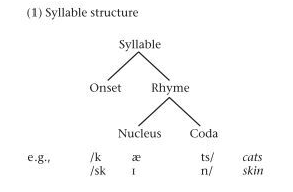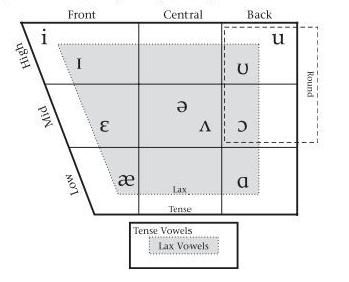Chapter 2: What is Phonetics?
Phonetics- the study of the minimal units that make up language (sounds of speech - the consonants, vowels, melodies, and rhythms)
Three aspects to the study of speech sounds
Articulatory phonetics- the study of the production of speech sounds
Acoustic phonetics- the study of the transmission and the physical properties of speech sounds
Auditory phonetics- the study of the perception of speech sounds
Representing Speech Sounds
Impressionistic phonetic transcription- a method of writing down speech sounds in order to capture what is said and how it is pronounced
the simplest and most basic method of phonetic analysis
the “normal” spelling of a word doesn’t tell us enough about how it is pronounced by different people
Spelling symbolizes the word that is meant, rather than how it is pronounced
Co-articulation- the influence of one sound on a neighboring sound
This book uses the International Phonetic Alphabet (IPA) for phonetic transcription
IPA symbols only represent the sounds of language
Segments- the discrete units of the speech stream that can be divided into consonants and vowels
Consonants- produced with a constriction somewhere in the vocal tract that impedes airflow
Vowels- have at most only a slight narrowing and allow air to flow freely through the oral cavity
Monophthongs- simple vowels composed of a single configuration of the vocal tract
Diphthongs- complex vowels composed of a sequence of two different configurations
Suprasegmental- applies to entire strings of consonants and vowels (such as stress, tone, and intonation)
Breakdown of Syllables
Onset- any consonants that occur before the rhyme
Rhyme- consists of the vowel and any consonants that come after it
Nucleus- the vocalic part of the rhyme
Coda- consists of any final consonants
All syllables have a rhyme, but onsets are optional in some languages

Articulation: English Consonants
Articulation- the motion or positioning of some part of the vocal tract with respect to some other part of the vocal tract in the production of a speech sound
When describing a consonant, it is necessary to provide information about three different aspects of its articulation:
Is the sound voiced or voiceless?
Where is the airstream constricted?
How is the airstream constricted?
Segmental features- the voicing, place, and manner of articulation
Three basic components of the human anatomy that are involved in the production of speech
Larynx- contains the vocal folds and glottis; located in the throat at the Adam’s apple
Vocal tract- located above the larynx, which is composed of the oral and nasal cavities
Subglottal system- part of the respiratory system located below the larynx
Voiceless sounds- sounds made without such vibration
Voiced sounds- sounds made with the vocal folds vibrating
Bilabial consonants- made by bringing both lips close together
[p], [b], [m], [w], [w̩]
Labiodental consonants- made with the lower lip against the upper front teeth
[f], [v]
Alveolar sounds- made with the tongue tip at or near the front of the upper alveolar ridge
[t], [d], [s], [z], [n], [r], [l], [ɹ]
Post-alveolar sounds- made with the front of the tongue just behind the alveolar ridge, right at the front of the hard palate
[ʃ], [ʒ], [tʃ], [dʒ]
Palatal sounds- made with the body of the tongue near the center of the hard portion of the roof of the mouth
[j]
Velar consonants- produced with the back part of the tongue body raised near the velum, also known as the soft palate
[k], [g], [ŋ]
Glottal sounds- produced when air is constricted at the larynx
[h], [ʔ]
Stops- made by obstructing the airstream completely in the oral cavity
Fricatives- made by forming a nearly complete obstruction of the vocal tract
Affricates- made by briefly stopping airstream completely and then releasing the articulators slightly so that frication noise is produced
Nasals- produced by relaxing the velum and lowering it, thus opening the nasal passage to the vocal tract
Approximants- involve constriction of the vocal tract, but the constrictions are not narrow enough to block the vocal tract or cause turbulence
Liquids- formed with slightly more constriction than glides, and their quality changes depending on where they occur in a word
Glides- made with only a slight closure of the articulators, and they require some movement of the articulators during production
Flap- involves the complete obstruction of the oral cavity, however, it is much faster than that of a stop
Consonant Chart

Articulation: English Vowels
Low vowel- pronounced with the jaw opened and the tongue body away from the roof of the mouth
[æ] [a]
Mid vowel- produced with an intermediate tongue height
[ɛ], [ʌ], [ɔ]
High vowel- pronounced with the tongue body close to the roof of the mouth
[i], [ɪ], [u], [ʊ]
Front vowel- pronounced by pushing the body of the tongue forward
Back vowel- pronounced by raising the body of the tongue in the back of the mouth
Tense vowels- have more extreme positions of the tongue and/or the lips
Lax vowels- require less extreme gestures, movements, and/or raisings
Vowel Chart

Suprasegmental Features
Identified by comparing different segments and different utterances to see what the features are
can influence the meanings of words and sentences
Length- the varying duration of a segment
Intonation- the pattern of pitch movements across a stretch of speech
Intonation contours are marked by pitch accents and phrase tones
Pitch accents usually involve a change in a fundamental frequency in the middle of an utterance
Phrase tones affect the overall meaning of an utterance at the end of an utterance, and group words into phrases
Typically distinguishes between a statement at the question
Tone- the pitch at which the syllables in a word are pronounced
Stress- the level of prominence of a syllable
The Phonetics of Signed Languages
There are five key parameters of articulation in signed languages
Place of articulation/location
Movement
Handshape
Hand orientation
Non-manual markers
 Knowt
Knowt